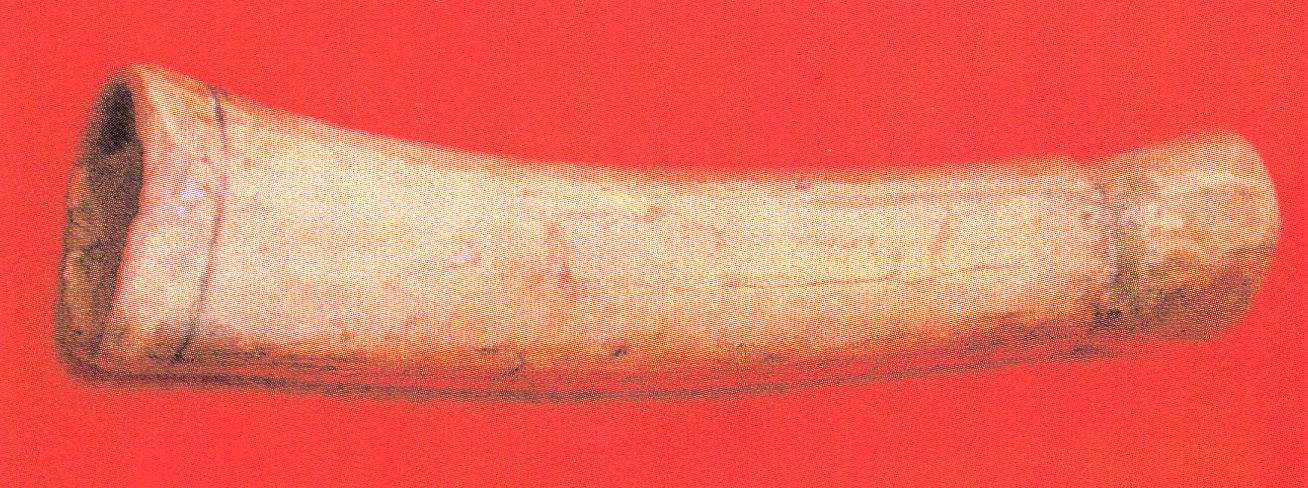
This fine example of a bi-conical medicine tub is made of dark steatite with a high gloss. It was recovered in Davidson County, Tennessee.
The Shaman’s medicine tube, blowing tube, sucking tube, tube pipe, or cupping horn has been part of American Indian medical practice for centuries. The medicine man combined his rites of exorcism with various practical procedures, as well as with the use of many plant and animal substances. Thus, applying suction to wounds was conceded by European observers to be a rational way of removing infection and/or foreign objects or even “bad spirits” from patients. Suction tubes or cups were used by healers of innumerable tribes. Shaman from the west coast were reported to apply such tubs, called a chacuaco, to the effected part of the body and sucking or blowing as hard as he could (Joseph D. McGuire, 1899, “Pipes and Smoking Customs of the American Aborigines, Based on Material in the U.S. National Museum.” Reports of the U.S.) Three such pipes were recovered at the Coal Draw site in north central Wyoming during the 1950’s and an additional nine fractured pipes were recovered during excavations at the site during the 1989 and 1990 seasons by the University of Wyoming. None of these pipes, nor others found in North America, show any sign of being used for tobacco smoking.

This unusual bone medicine tube was pictured by Lar Hothem (2006) and was recovered from a Historic Chippewa site in Michigan.
The use of medicine tubes has been dated from the Late Archaic period as long ago as 2800 B.P to perhaps as recent as the 1700’s like those from the Coal Draw site. These tubes were most often made from soft stone such as steatite, that could be carved. Many examples have abstract drawings or designs along them.